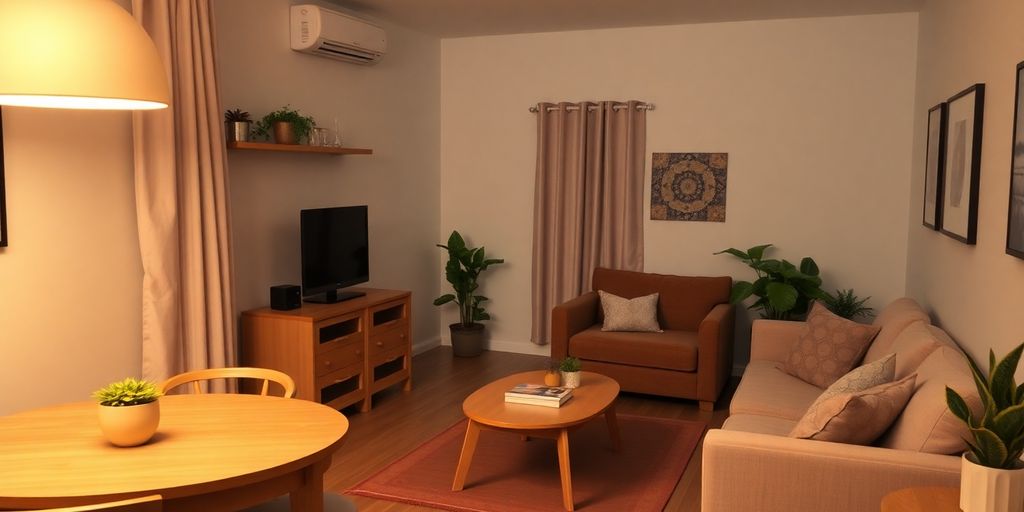How much loss of use coverage do I need?

Loss of Use coverage is a vital part of insurance that helps you cover living expenses when you can't stay in your home due to damage. Understanding how much coverage you need can save you from financial stress during tough times. This article will break down the key points about Loss of Use coverage, helping you make informed decisions about your insurance needs.
Key Takeaways
- Loss of Use coverage helps pay for temporary living costs if your home is uninhabitable.
- Factors like your lifestyle, property type, and location affect how much coverage you need.
- Calculating your Loss of Use coverage requires assessing your living expenses and potential additional costs.
- Different insurance options, such as standard and enhanced coverage, can provide varying levels of protection.
- It's important to understand common misconceptions about coverage limitations and how they impact your premiums.
Understanding Loss of Use Coverage
Definition and Purpose
Loss of use coverage is like a backup plan for when your home becomes unlivable due to a covered event, like a fire or flood. It helps cover the costs of living somewhere else temporarily. Think of it as a safety net that kicks in when you can't stay at your place. It's part of most homeowners' insurance policies and is sometimes called "additional living expenses" coverage.
Common Scenarios Requiring Coverage
You might need this coverage in situations like:
- A fire damages your home, making it impossible to live there.
- A natural disaster, like a hurricane, forces you to evacuate.
- Major repairs or renovations require you to move out temporarily.
Key Benefits of Having Coverage
Having loss of use coverage can really ease the stress during tough times. Here's why it's good to have:
- Covers hotel or rental costs when your home is uninhabitable.
- Helps with additional food expenses if you can't cook at home.
- Provides peace of mind knowing you have financial support during a crisis.
Loss of use coverage steps in when life throws a curveball, helping you manage unexpected living expenses until you can return home.
Factors Influencing the Amount of Loss of Use Coverage Needed
Property Type and Location
When it comes to figuring out how much loss of use coverage you need, the type of property you own and where it's located play a big role. If you own a fancy condo in a pricey city, you might need more coverage than if you have a modest home in a small town. The location can impact the cost of temporary housing, so it's important to consider this when choosing your coverage.
Lifestyle and Living Expenses
Your lifestyle and what you spend on living expenses also matter. If you're used to a certain standard of living, you'll want enough coverage to maintain that if you have to move out temporarily. Think about things like eating out, commuting, and any other daily costs that might change if you're not living at home.
Insurance Policy Limits
Finally, check out the limits on your current insurance policy. Some policies have caps on how much they'll pay for loss of use. Make sure your coverage amount aligns with your potential needs, so you're not caught short if something unexpected happens.
It's all about balancing what you need with what you can afford. You don't want to pay for more coverage than necessary, but you also don't want to be stuck with unexpected costs if you have to leave your home. So, take a good look at your situation and plan accordingly.
How to Calculate Your Loss of Use Coverage Needs
Assessing Temporary Living Costs
Figuring out how much you might need for temporary living costs is like planning a vacation budget, but less fun. Start by thinking about where you'd stay if your home was suddenly unlivable. Would it be a hotel, a rental, or with family? Each option has different costs. Don't forget to include meals and transportation, since these can add up quickly when you're not at home.
Evaluating Additional Expenses
Next, consider other expenses that might pop up. This could be stuff like extra storage fees for your belongings, costs to set up temporary utilities, or even pet boarding if your temporary place doesn't allow furry friends. Make a list of these possible expenses so you won’t be caught off guard.
Consulting with an Insurance Professional
When in doubt, talk to someone who knows their stuff. An insurance pro can help you figure out the right amount of coverage based on your lifestyle and needs. They might even point out things you hadn't thought of. It's like having a cheat sheet for adulting.
Getting the right coverage isn't just about numbers; it's about peace of mind. Knowing you're covered if things go sideways can make a huge difference.
Comparing Loss of Use Coverage Options

Standard vs. Enhanced Coverage
Alright, so when you're talking about loss of use coverage, you got your standard and enhanced options. Standard coverage is like your basic safety net. It usually covers temporary living expenses if your place gets wrecked by something your policy covers. Enhanced coverage, though, is a bit fancier. It might cover more stuff or give you a higher limit. So, if you want that extra peace of mind, you might want to think about stepping it up.
Policy Add-Ons and Riders
Now, let's talk about add-ons and riders. Think of these like extra toppings on your pizza. You can customize your coverage to fit your needs. Some folks might add coverage for stuff like theft or extra living expenses. It's all about what you think you might need. Just remember, more toppings mean a pricier pizza.
Choosing the Right Insurer
Finally, picking the right insurer is key. Not all insurance companies are created equal. Some might offer better customer service or more flexible options. It's like choosing between fast food and a sit-down restaurant. You want to make sure you get the best deal for your money. So, do a bit of research and maybe talk to a few agents before you decide.
It's always a good idea to think about what you really need and what makes you feel secure. Insurance isn't one-size-fits-all, so tailor it to fit your life.
Common Misconceptions About Loss of Use Coverage

Coverage Limitations
A lot of folks think loss of use coverage is a catch-all, but that's not the case. It's not going to cover everything under the sun. Typically, it just helps with costs like temporary housing, meals, and maybe some transportation if your place is unlivable due to a covered event. So, if your TV gets fried in a lightning storm, don't expect this coverage to get you a new one.
Understanding Policy Terms
Insurance talk can be tricky. Sometimes, people get confused by the fine print and end up misunderstanding what their policy actually covers. It's super important to read through the policy terms. If you're not sure about something, ask your agent to explain it in plain English. You don't want any surprises when you're already dealing with a tough situation.
Impact on Premium Costs
There's a common belief that adding loss of use coverage will skyrocket your premiums. But that's not always true. Sure, it might bump up the cost a bit, but it's usually not a huge jump. Plus, the peace of mind it brings can be worth the extra few bucks each month. It's like paying a little now to avoid a big headache later.
It's always better to know what you're getting into. Understanding your insurance coverage can save you from unexpected expenses and stress down the road.
Steps to Take When Filing a Loss of Use Claim

Documenting Your Losses
First thing's first, keep a record of everything. Take photos, write down dates, and save receipts. You need proof of what you lost and the expenses you’re facing. It's like your insurance homework—no one loves it, but it's gotta be done.
Working with Claims Adjusters
Next up, you're gonna chat with a claims adjuster. They're the ones who'll decide how much you get. Be honest and clear about your situation. If they ask for more info, be ready to provide it. It's like dealing with a teacher—give them what they need, and hopefully, you'll get a passing grade.
Ensuring a Smooth Claims Process
Finally, follow up regularly. Don’t just sit back and wait. Call or email to check the progress. You don't want your claim to get lost in the shuffle. Keep your insurance company on their toes, and hopefully, everything wraps up without a hitch.
Filing a loss of use claim can feel like a hassle, but staying organized and proactive can make the process smoother. Remember, your insurer is there to help, but you need to do your part too.
Real-Life Examples of Loss of Use Coverage in Action
Natural Disaster Scenarios
Imagine a hurricane rolls through town and leaves your house a soggy mess. The roof's gone, and the living room's a swimming pool. Loss of use coverage kicks in here, covering your hotel stay while the house gets fixed. Without it, you'd be couch surfing or worse.
Home Renovation and Repairs
So, you've got a kitchen renovation planned, but then the contractor finds some nasty mold behind the cabinets. Suddenly, you need to move out for a bit. Loss of use coverage helps out by covering your rent somewhere else while the mold gets sorted out.
Unexpected Evictions
Picture this: your landlord gives you the boot because they sold the place. You weren't expecting to move so soon, right? Loss of use coverage can help cover temporary housing costs until you find a new spot. It's like a safety net when life throws a curveball.
Loss of use coverage is like a trusty friend who’s got your back when things go sideways. It steps in when you’re in a jam, making sure you’re not left out in the cold.
Final Thoughts on Loss of Use Coverage
In conclusion, figuring out how much loss of use coverage you need is really important for protecting yourself. This type of insurance helps you pay for living expenses if your home becomes unlivable due to damage. To decide on the right amount, think about your monthly costs, how long repairs might take, and any extra expenses you might face. It's a good idea to talk to an insurance expert who can help you understand your options and find the best coverage for your situation. Remember, having enough loss of use coverage can give you peace of mind during tough times.
Frequently Asked Questions
What is loss of use coverage?
Loss of use coverage helps pay for living expenses if your home is damaged and you can't live there. It covers things like hotel bills and food costs.
When do I need loss of use coverage?
You need this coverage if your home is unlivable due to damage from events like fires, storms, or other disasters.
How much loss of use coverage should I get?
The amount you need depends on your living expenses and how long you might be out of your home. It's best to talk to an insurance agent.
Does loss of use coverage affect my insurance premium?
Yes, adding loss of use coverage can increase your insurance premium, but it provides important protection.
Can I file a claim for loss of use coverage?
Yes, if your home is damaged and you have this coverage, you can file a claim for your extra living expenses.
Is loss of use coverage included in my home insurance?
It can be included in your home insurance policy, but not always. Check your policy details or ask your insurance agent.
